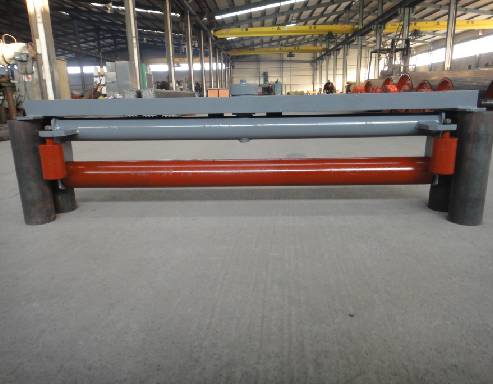 Afrikaans
Afrikaans  Albanian
Albanian  Amharic
Amharic  Arabic
Arabic  Armenian
Armenian  Azerbaijani
Azerbaijani  Basque
Basque  Belarusian
Belarusian  Bengali
Bengali  Bosnian
Bosnian  Bulgarian
Bulgarian  Catalan
Catalan  Cebuano
Cebuano  Corsican
Corsican  Croatian
Croatian  Czech
Czech  Danish
Danish  Dutch
Dutch  English
English  Esperanto
Esperanto  Estonian
Estonian  Finnish
Finnish  French
French  Frisian
Frisian  Galician
Galician  Georgian
Georgian  German
German  Greek
Greek  Gujarati
Gujarati  Haitian Creole
Haitian Creole  hausa
hausa  hawaiian
hawaiian  Hebrew
Hebrew  Hindi
Hindi  Miao
Miao  Hungarian
Hungarian  Icelandic
Icelandic  igbo
igbo  Indonesian
Indonesian  irish
irish  Italian
Italian  Japanese
Japanese  Javanese
Javanese  Kannada
Kannada  kazakh
kazakh  Khmer
Khmer  Rwandese
Rwandese  Korean
Korean  Kurdish
Kurdish  Kyrgyz
Kyrgyz  Lao
Lao  Latin
Latin  Latvian
Latvian  Lithuanian
Lithuanian  Luxembourgish
Luxembourgish  Macedonian
Macedonian  Malgashi
Malgashi  Malay
Malay  Malayalam
Malayalam  Maltese
Maltese  Maori
Maori  Marathi
Marathi  Mongolian
Mongolian  Myanmar
Myanmar  Nepali
Nepali  Norwegian
Norwegian  Norwegian
Norwegian  Occitan
Occitan  Pashto
Pashto  Persian
Persian  Polish
Polish  Portuguese
Portuguese  Punjabi
Punjabi  Romanian
Romanian  Russian
Russian  Samoan
Samoan  Scottish Gaelic
Scottish Gaelic  Serbian
Serbian  Sesotho
Sesotho  Shona
Shona  Sindhi
Sindhi  Sinhala
Sinhala  Slovak
Slovak  Slovenian
Slovenian  Somali
Somali  Spanish
Spanish  Sundanese
Sundanese  Swahili
Swahili  Swedish
Swedish  Tagalog
Tagalog  Tajik
Tajik  Tamil
Tamil  Tatar
Tatar  Telugu
Telugu  Thai
Thai  Turkish
Turkish  Turkmen
Turkmen  Ukrainian
Ukrainian  Urdu
Urdu  Uighur
Uighur  Uzbek
Uzbek  Vietnamese
Vietnamese  Welsh
Welsh  Bantu
Bantu  Yiddish
Yiddish  Yoruba
Yoruba  Zulu
Zulu Different Varieties of Take-Up Pulleys and Their Applications in Various Industries
Understanding the Types of Take-Up Pulleys
Take-up pulleys play a crucial role in various mechanical systems, especially in conveyor belt applications. They are essential for maintaining tension in the conveyor belt, ensuring smooth operation and preventing slippage, which can lead to wear and tear or even failure of the system. The design and type of take-up pulley can significantly influence the performance and longevity of the entire conveyor system. In this article, we will explore the various types of take-up pulleys, their functions, and their advantages.
1. Fixed Take-Up Pulleys
Fixed take-up pulleys are the simplest form of take-up systems. In this design, the pulley remains stationary while the belt stretches and requires adjustment. This type of pulley is typically used in short conveyor lengths where minimal belt stretch is expected. Fixed take-up pulleys are often more economical and easier to install but may require frequent manual adjustments to maintain appropriate tension.
Advantages - Cost-effective for shorter conveyors. - Easy installation and maintenance.
Disadvantages - Requires manual tension adjustments. - Limited flexibility regarding belt length variations.
2. Adjustable Take-Up Pulleys
Adjustable take-up pulleys allow for changes in tension without significant reconfiguration of the conveyor system. These pulleys are designed with a mechanism that enables operators to adjust the position of the pulley, thus changing the tension in the belt. This can be done through mechanical means, such as screws or levers, or by using hydraulic systems.
Advantages - Facilitates easy tension adjustments. - Reduces downtime during maintenance.
Disadvantages - More complex installation compared to fixed pulleys
. - Requires some level of operator training for effective use.3. Automatic Take-Up Pulleys
Automatic take-up pulleys are designed to make tension adjustments automatically as the conveyor belt operates. This type involves sophisticated sensors and control systems that detect belt slack and adjust the pulley position accordingly. Automatic take-up systems provide the highest level of efficiency and are commonly used in large-scale operations with long conveyor systems.
types of take up pulley

Advantages - Minimizes manual intervention. - Provides consistent belt tension, enhancing operational efficiency.
Disadvantages - Higher initial costs due to advanced technology. - Requires regular maintenance of the automatic system.
4. Gravity Take-Up Pulleys
Gravity take-up pulleys utilize the force of gravity to maintain tension in the conveyor belt. This system typically involves a weight or a set of weights that are suspended above the belt, applying downward force. As the belt elongates due to use, the weights will adjust accordingly, ensuring even tension across the length of the conveyor.
Advantages - Simple and reliable mechanism. - Low maintenance requirements.
Disadvantages - Limited to applications where vertical space is available. - May not be effective in environments with significant vibration or movement.
5. Spring Take-Up Pulleys
Spring take-up pulleys use springs to provide tension to the conveyor belt. These can be either compression or extension springs, depending on the design. The spring system allows for automatic adjustments as the belt stretches, absorbing changes in tension without the need for manual intervention.
Advantages - Offers a buffer against sudden tension changes. - Reduces wear and tear on the belt.
Disadvantages - Springs may degrade over time and require replacement. - May not provide the same level of tension control as automatic systems.
Conclusion
Choosing the right type of take-up pulley is critical for the effective operation of conveyor systems. Each type of take-up pulley has its unique benefits and limitations, and the decision often depends on factors such as the length of the conveyor, the nature of the materials being moved, and the operational environment. By understanding these options, engineers and operators can better design their systems to optimize performance and minimize downtime, leading to increased productivity and reduced operational costs.
-
Trusted Conveyor Solutions from Leading Conveyor Idler Roller ManufacturersNewsJun.27,2025
-
Reliable Return Idler Solutions for Efficient Belt Conveyor SystemsNewsJun.27,2025
-
Precision Conveyor Accessories for Streamlined Material HandlingNewsJun.27,2025
-
High-Quality Belt Conveyor Idler Solutions for Efficient Material HandlingNewsJun.27,2025
-
High-Performance Belt Conveyor Pulleys for Reliable Material HandlingNewsJun.27,2025
-
Enhancing Material Handling EfficiencyNewsJun.27,2025





























